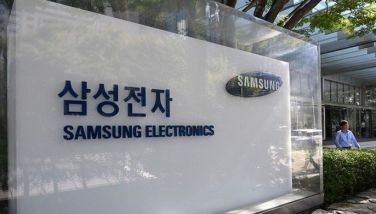Ateneans connecting to the world
(Celebrating 20th year of Phl Internet) (Second of two parts)
MANILA, Philippines - Participating early in the development of the Internet in the Philippines, the Ateneo de Manila University has risen far above the use of the 9600bps modem in 1993.
The arrival of the Internet in the campus prompted innovations both internal and external, even paving the way for other universities to connect to the Internet. With the connection of the Ateneo with Victoria University of Technology, it acted as a local hub for campuses like UP, UST, and DLSU.
Four years after the actual connection made by the Philnet, Ateneo moved from 192 kilobits (Kbps) per second to two megabits per second (Mbps).
“I spearheaded Phase 3, which is when we moved Ateneo from kilobits per second (we were connected via 192 Kbps in 1997 and I remember I can click on something, walk somewhere to get something, and come back just as a page was beginning to render in Netscape browser) to 2 Mbps. I ran into a lot of challenges there, did my rounds across the campus to get the buy-in from each school unit to put up with a higher per computer cost,†said Dr. Pierre Tagle, former campus network manager of the Ateneo. It was also in 1998 when the Campus Network Group (CNG) was formed. From 1998 to 2012, the CNG managed the university’s network services.
The early phases of the Internet usage in the campus did not come easy. According to Mark Bautista, IT staff supervisor, the first challenge was to teach the users how to use the Internet considering that the initial connection of the university was thru dial-up.
“It started with a single connection per department chairs/office directors. We set up 10 modems in the server room for the incoming connections and one modem per department/office. The maximum speed of connection was 9.6 Kbps,†Bautista said.
In 1996, a fiber cable was installed as a backbone connection in campus using FDDI (Fiber Distributed Data Interface) topology. Since 2005, bandwidth in the Loyola campus has been increasing by an average of 62 percent per year (from 6 Mbps in 2005, now it’s almost 400 Mbps).
The Internet connection in the campus has evolved ever since. From a simple mail connection before, there is now Wi-Fi availability both for students and faculty. Administrative functions are also supported by the Internet with the university’s online information services. Student enlistment, assessment, and grade submission are among the functions that are available online.
With its countless uses and benefits to the university, the Internet is used most especially as an aid for student learning. It’s used for Internet-based course management systems to supplement classroom learning, and online academic journal subscription — a valuable resource for student and faculty researchers.
The university is also developing innovative ways to use the Internet. Going beyond entertainment, in these pressing times, we find the niche for disaster management and education in terms of user and content interactivity enabled by the power of Internet. As an ongoing research, Ateneo IPTV aims to engineer an immersive user experience, backed up by world-class technology in High Definition HD TV and guided by the Filipino value of resiliency. Indeed, the Ateneo de Manila University is a literal hotspot for multi-stakeholder, research-driven and collaborative works such as Internet Protocol Television. From our humble beginnings 20 years ago, we now have unprecedented access and opportunity to make use of our network infrastructure for, say, disaster management and education, but really, the possibilities are endless, and make it work for the Philippine nation. And, it is in pushing for a smarter ICT-enabled Philippines that Ateneo contributes to national development.
The central administration office in charge of providing comprehensive IT services to the university, including network services, is the Information Technology Resource Management Office (ITRMO) which was formed in 2010. This office manages the information system requirements of the different university functions by facilitating identification, planning, analysis, design, development, installation and maintenance of information systems needed by different academic and administrative offices in the university.
ITRMO also provides telecommunications network infrastructure and services needed by the different university stakeholders to support university transactions, collaboration, and decision-making. The office ensures effective and efficient use of appropriate computing devices and applications by supporting the acquisition, usage and disposal of different information technology resources.
“It is imperative for a global university such as Ateneo de Manila University to have good, reliable Internet connection. The Internet is not just a deep and vast source of information, but it is in itself a venue for learning. With the Internet, generation of knowledge becomes a continuous process as it can easily be done collaboratively,†said Sandra Lovenia, director of the ITRMO.
***
Published with the initiative of Ateneo Innovation Center with support from ITRMO and UCPRO, through Benjz Gerard Sevilla (IPTV Ateneo). Learn more by visiting iptv.ateneo.edu and join the conversation using #20PHNET.
- Latest
























